Many people want to know the criterias to distinguish Japanese vs Mexican food. Suppose you are one of them, you are in the right place since I will give you all vital information about 2 cuisines and point out their similarities and differences.
Trust me! You can gain many things after reading this post as you will know the characteristic features of these 2 cuisines. Also, it is an excellent chance to expand the ideas in your menu with some iconic dishes in 2 nations.
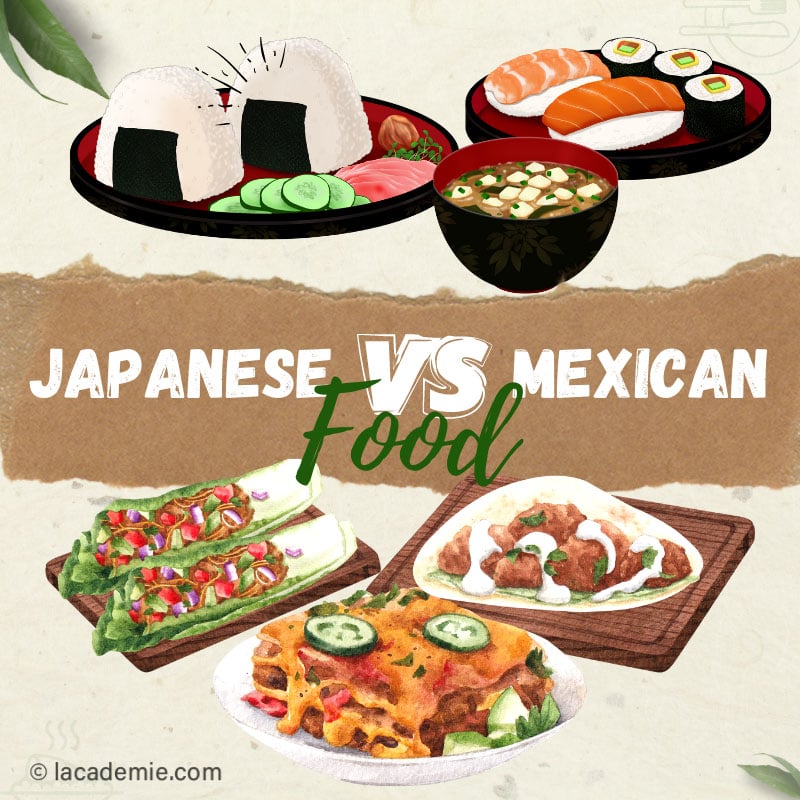
Some Special Things About Mexican Food
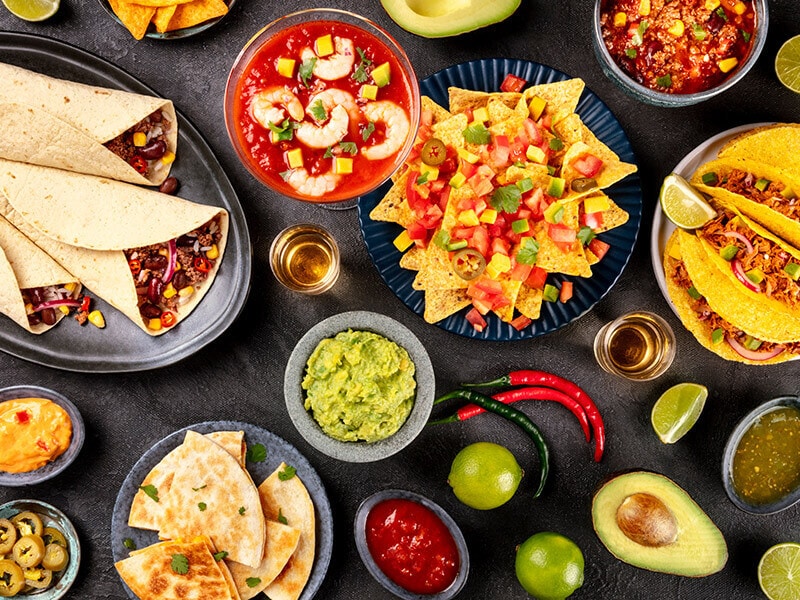
Mexico is a country in North America with a long-standing culture and cuisine. And Mexican cuisine is associated with the country’s development history. The first food recipes and methods were born from agricultural communities like Maya.
Mesoamerican cuisine has a vast influence on Mexican food. In addition, the diversity of their cuisine is strongly affected by Spain’s culture and food in the colonial period. Despite the strong influence, there are some differences between Mexican vs Spanish food. Not only that, Mexican food also gets the breath of Asian and African cuisine.
Most Mexican people like to enjoy food at home. In this country, women are the main human source to take care of the cooking. Moreover, girls can get married when they know how to cook and prepare delicious dishes (1).
Overall, Mexican food brings an intense flavor to diners when they enjoy it. In particular, the diversity in spices, sauces, and ingredients offers many choices for visitors when exploring Mexican cuisine.
Spicy is a prominent feature of Mexican food because Mexicans use many chili peppers in dishes. Chili is also one of the abundant ingredients in this beautiful country. Moreover, corn is a vital part of Mexican daily meals.
You may encounter corn’s gentle and delicate taste in burritos or tacos. The natives like to prepare food from beans or cheese. Like other cuisines, pork, beef, chicken, and seafood are the primary protein sources of this country’s cuisine.
Nowadays, people eat a lot of vegetables in their meals, and so do Mexicans. Delicious salads made with lettuce, onion, tomatoes, and bell pepper will hook you.
Street food is also a unique cultural feature in this country. You’ll easily enjoy snacks, tacos, or tamales all over the streets of Mexico. In 2010, Mexican cuisine appeared on UNESCO’s list of Intangible Cultural Heritage of Humanity.
Explore all essential knowledge about Mexican cuisine.
Expand Your Knowledge With Information About Japanese Cuisine
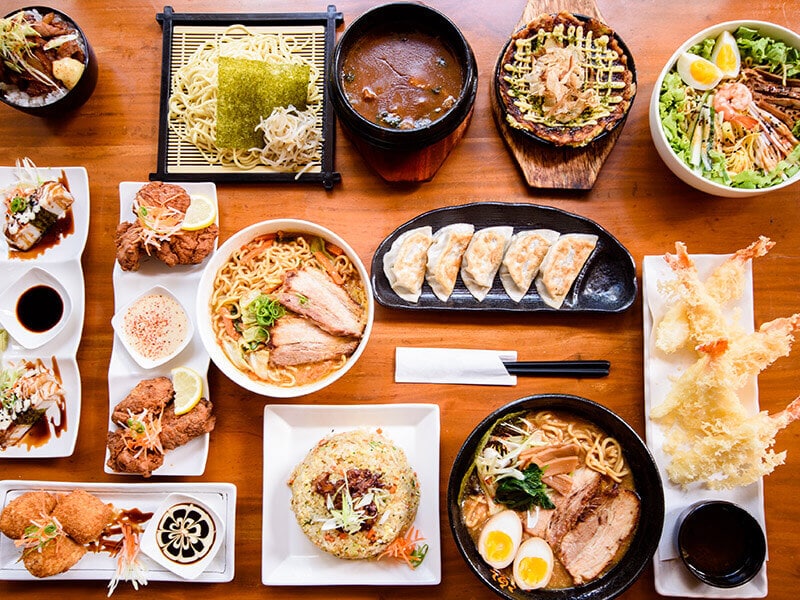
Japan is a country with extensive and diverse cuisine in Asia. Many excellent Japanese foods are influenced by Chinese and Western cuisine. Ramen and Gyoza are examples that have many Chinese imprints. Meanwhile, you can enjoy the Western breeze in curries, spaghetti, or hamburger.
Rice, noodles, seafood, and meat are the main foods in the land of the rising sun. You should not ignore sushi, sashimi, ramen, or miso when you have the chance to set foot in this East Asian country. Also, the Japanese are famous for eating raw fish or meat.
Eating meat in Japan was pretty limited by Buddhism. Nevertheless, meat-based dishes began to become popular in the 1880s. And sushi and ramen have also been more widely known in other countries.
Moreover, in Japan, you can enjoy Wagyu beef – one of the most expensive beef worldwide. You can only find this food quickly at luxurious and high-end restaurants in Japan. Regarding the fish, tuna and salmon are also key species for making sushi.
A feature of this cuisine is its umami flavors as the locals primarily use raw fish, seaweed, or fermented foods in their daily meals. In fact, UNESCO has recorded Japanese cuisine as the World’s Intangible Heritage.
Boost your knowledge with the introduction to Japanese cuisine.
Similarities Between Mexican And Japanese Food
Besides the distinct features, the cuisine is also a place of interaction and learning from each other, so you can find some similarities between Mexican food and Japanese food. Let’s discover them right now.
Both Japanese and Mexicans prefer to use rice, corn, and beans in daily dishes. Furthermore, you can find several vegetarian dishes made from cilantro, radishes, or other veggies on the menu of restaurants in the 2 nations.
Not only that, if you are a fan of meat or seafood dishes, you can consume these delicacies in both countries. Also, you can find many delicious fruits in Japan and Mexico. The people in 2 countries habitually eat fruits as a dessert or make treats from fresh fruits.
Like the Japanese, Mexicans prefer fresh ingredients over frozen or canned components when making food to bring the most authentic and refreshing flavor.
A common thing between Japanese food and Mexican food is the spicy taste. I have not discussed the spicy level, but you can find a mild or intense spiciness when enjoying the food of 2 countries. Tempura, wasabi , tacos, or burritos are some specific examples.
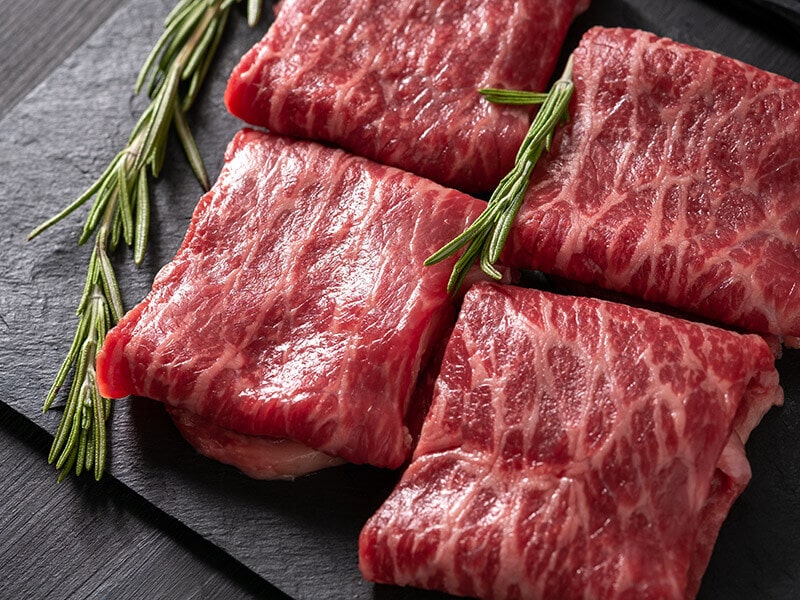
Mexican Food vs. Japanese Food: What Are The Differences?
These are 2 countries on 2 different continents, so obviously, there are many distinct dissimilarities in their food. Please fasten your seat belt and join the journey to explore the differences between these 2 cuisines.
What Are The Iconic And Staple Foods Of Each Cuisine?
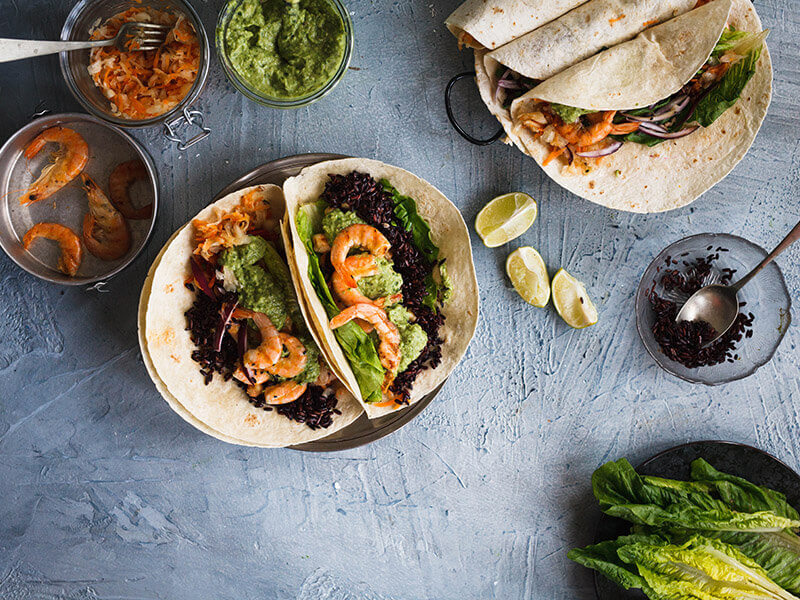
Corn is a staple food in daily meals in Mexico. Specifically, Mexicans can consume anything with tender or hard corn tortillas. Masa harina is the key component in tortilla. The chef makes it by grinding the corn into dough and fry or bake the dough to make these flatbreads.
Meanwhile, rice and noodles are indispensable options to fill the hungry stomach of Japanese people. It is not difficult to find restaurants selling delicious noodles or noodle soups in the land of cherry blossoms. Also, there are many noodles in Japan, like Udon or Ramen.
Furthermore, it will be remiss not to mention steamed rice. Japanese people can eat cooked rice with the main course or make rice rolls to enjoy with soy sauce and wasabi. Indeed, the importance of sushi rolls in Japan is as much as tortillas in Mexico.
Go to Japan to try the best and most delicious Sushi.
How To Serve And Consume The Food In 2 Countries?
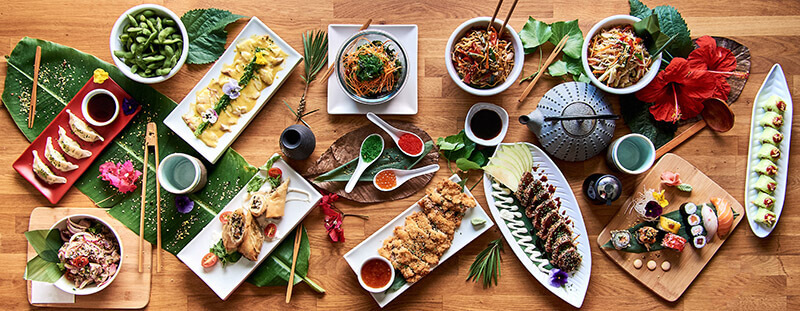
Consuming and serving are effective criteria for distinguishing Mexican and Japanese food. Let’s discover how Mexicans and Japanese enjoy delectable food.
Like other East Asian countries, Japanese people often use chopsticks to consume the beautiful dishes on the banquet table. Meanwhile, Mexicans will eat food by hand, with forks or spoons.
They often use their hands to enjoy wrapping dishes, while forks and spoons are suitable for eating salads, stews, or soups.
When participating in parties in Japan, you’ll be surprised by the number of bowls and plates on the table since the natives will serve food in small portions. On the other hand, diners can have the opportunity to enjoy Mexican food in more significant portions.
Differences In The Use Of Additional Ingredients
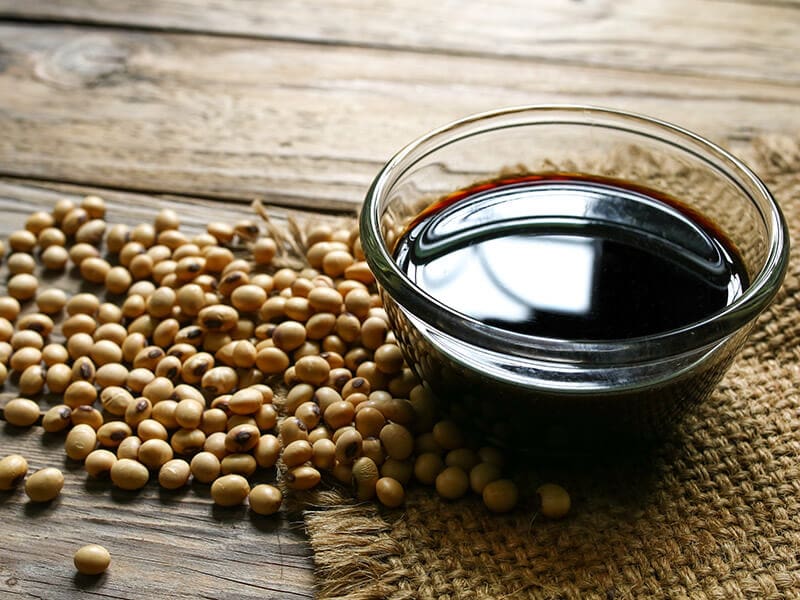
Dairy products like cheese, butter, or milk are ingredients that you can easily find in Mexico’s culinary recipes. Nevertheless, it is difficult to see them in Japanese dishes, which is why Japanese food’s texture is lighter and thinner.
In contrast, there are few ingredients that you can only find in Japanese cuisine, such as fermented foods, seaweed, or soy-based components. Of course, Mexican food does not contain them.
Seaweed is a food associated with the cuisine of many Asian countries. And it is one of the common points between Japanese vs Korean foods. It plays an essential role in creating soups or rice rolls. Also, you can enjoy the dried seaweed directly.
Furthermore, fermented foods such as pickles or miso are also star elements in many classic Japanese culinary books. If you want to enjoy yummy soy-based food like soybeans or tofu, you must go to Japan instead of Mexico.
Walk along on the Mexican street to consume wonderful dishes.
Let’s Compare The Flavor Between Japanese And Mexican Food
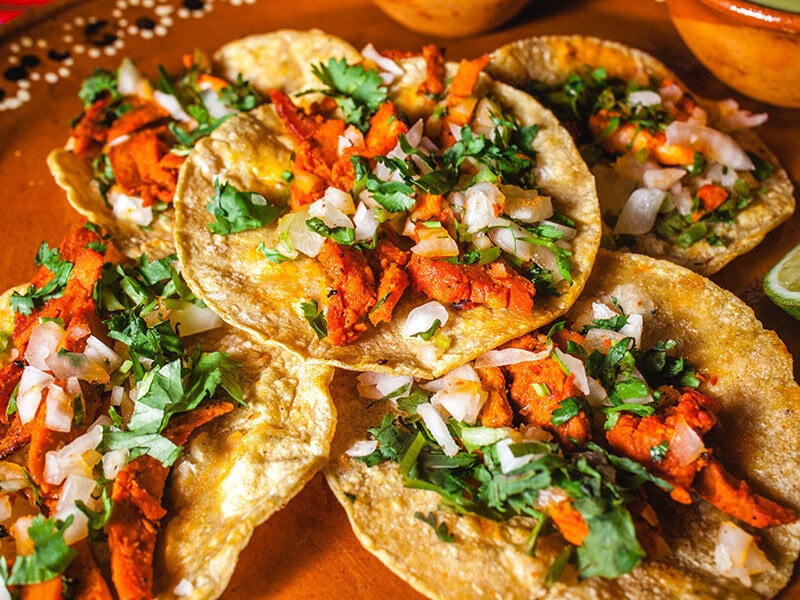
In terms of flavor, Mexican specialties seem to be richer and spicier than Japanese food because Mexicans use many seasonings and chili in their dishes. Therefore, it is easy to understand that Mexican food features one of the spiciest foods worldwide.
Indeed, Mexico is a paradise of chili. There are more than 100 different species of chili found in this North American country. Jalapeno, poblano, habanero, and serrano are types that regularly appear in the natives’ recipes.
Unlike Mexican food, the Japanese want to bring the realistic and natural feelings to diners, so they use fewer spices in recipes. Japanese chefs always try to keep the components fresh and apply simple preparations.
You should not ignore mild Japanese food if you love lightness and sophistication. Moreover, you can feel the spicy taste in the Japanese dishes, but the spiciness is gentle and enough to stimulate your taste buds.
Explore the 5 best foods you must taste in Japan.
Japanese And Mexican Food: Which Is Better?
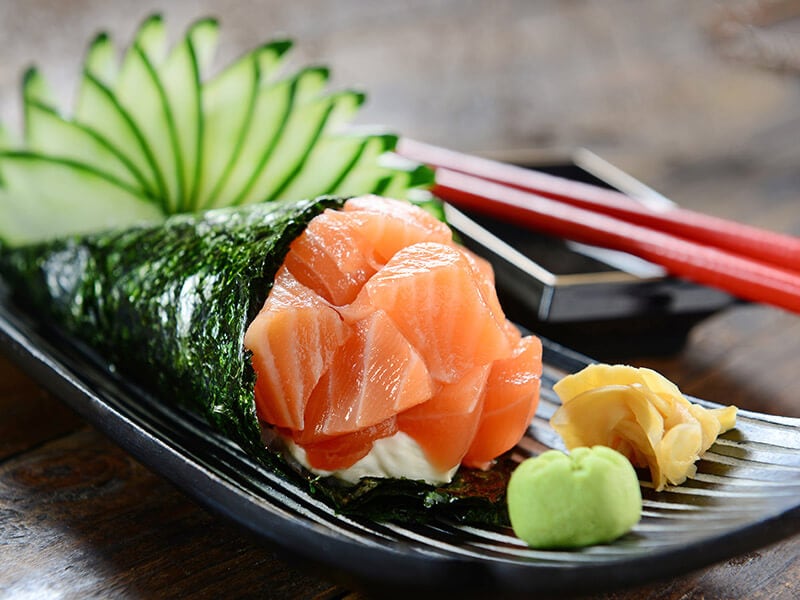
Which is healthier? This is a sensitive topic that I have received many requests for. Here is my opinion regarding this matter.
In terms of health, Japanese dishes contain less cholesterol and many antioxidants. In particular, eating Japanese food helps reduce the risks of lung, colon, breast, or prostate cancer.
However, if you do not want to add carbs, Japanese foods are not the ideal choice. In addition, the fiber content of Japanese dishes is pretty low. The use of many soy-based foods can have a strong impact on hormone levels.
Mexican dishes often contain a high amount of fiber since beans are a staple food in this country. Not only that, you’ll recharge vitamins, minerals, and protein for the body when consuming Mexican food.
Nevertheless, the amount of cholesterol in your body can increase since Mexican food contains lots of saturated fat from dairy products. Eating too hot spicy food can cause irritable bowel syndrome or inflammatory bowel diseases, and Mexico is famous for many spicy foods (2).
Learn how to make a delicious Mexican healthy meal right now.
Add Some Mexican And Japanese Foods To Your Cookbook
Do you know any delectable Japanese or Mexican food? It’s time to diversify your menu for gatherings with some delicious Japanese and Mexican suggestions. Let’s give them a try.
Check Out These Yummy Japanese Foods!
Are you ready to step into the paradise of mouth-watering Japanese foods? I guarantee the taste of them will not let you down. Save them right now!
1. Tempura
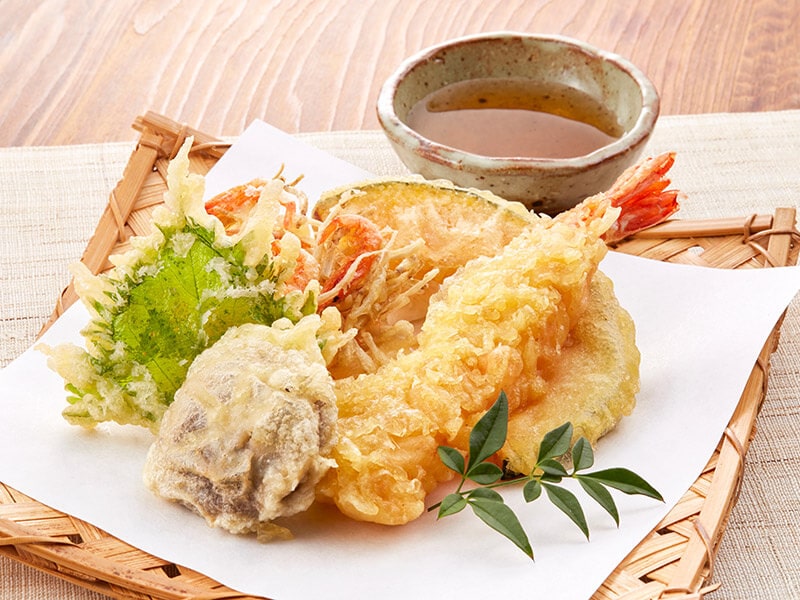
Tempura is a dish you have to give it a shot when you arrive in Japan. It is a reward for fans of crispy fried foods. The Japanese will cover a layer of tempura batter outside veggies, fish, or meat and deep-fry until they get the eye-catching golden color.
Green beans, daikon radish, sweet potato, and pumpkin are popular veggies to prepare this fantastic dish. The Japanese often consume this wonderful treat with Tsuyu dip or served with noodle soup or rice bowl.
2. Yakitori
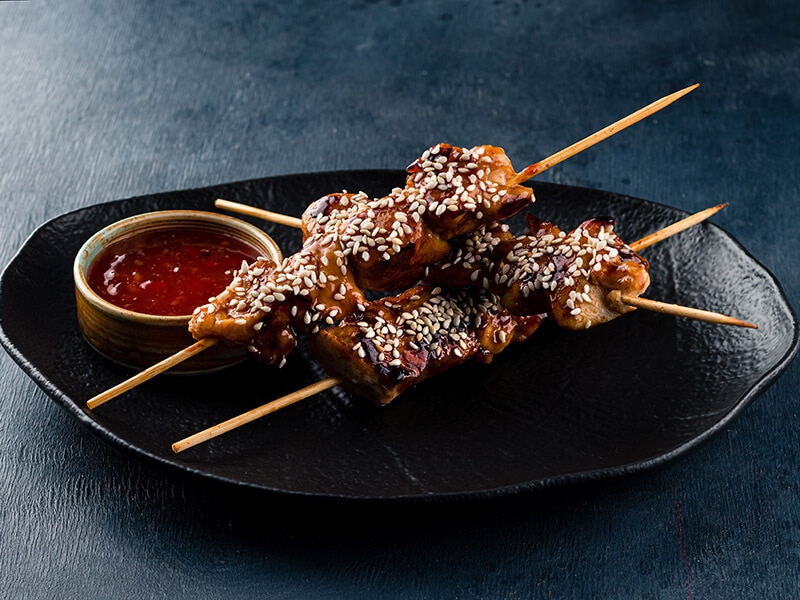
If you love the smokey touch of grilled meat, you cannot ignore Yakitori. This skewered chicken recipe appears a lot in restaurants and vendors on the streets in Japan. The marinated meat will be attached to the bamboo or steel skewers and grilled on a charcoal fire.
When eating this dish, you can feel the taste of mirin rice wine, Sake traditional drink in Japan, or soy sauce because they are brushed on meat. This recipe has many different variants, such as Negima (chicken and spring onion), momo (chicken thigh), or Tsukune (chicken meatballs).
Discover the right way to consume Yakitori in Japan.
3. Soba
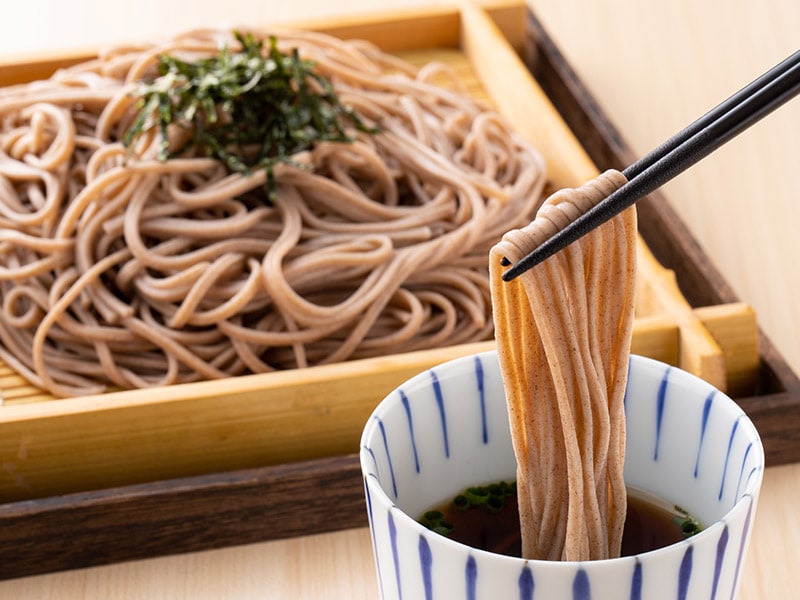
Soba or buckwheat noodles is one of the most common noodles in Japan. You can immerse yourself in the nutty and earthy flavor of this food. In addition, the presence of sesame and garlic will enhance the taste.
Japanese people often serve it with soups. To diversify the flavor of this delicious food, chefs will add some types of topping, such as tempura flakes, spring onions, or fish cakes. In addition, it looks better with green onions and seaweed.
4. Sushi
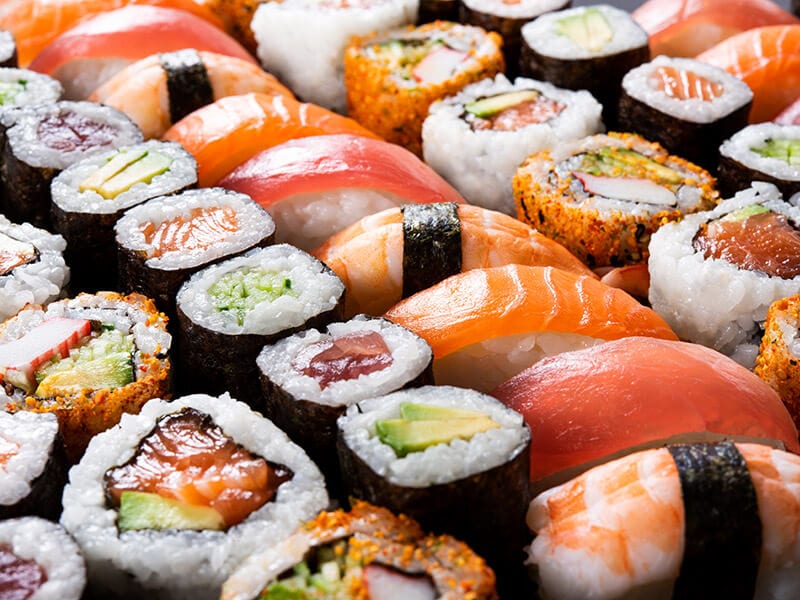
Most tourists enjoy sushi when arriving in Japan. This traditional dish is a sophisticated and reasonable combination of vinegared rice, spices, raw seafood, and veggies. You may encounter many different styles of sushi processing across this country.
Hanaya Yohei is said to be the inventor of this symbolic dish. Typically, Japanese people will enjoy this delicious food with soy sauce or wasabi. To beautify the dish, the natives add daikon radish or pickled daikon to the food.
Go To The Kitchen To Make These Mexican Foods Right Now!
The Mexican foods in this section will bring a fresh breeze to your meal. Hence, prepare a pen and notebook to note the excellent choices for your upcoming party.
1. Tortillas
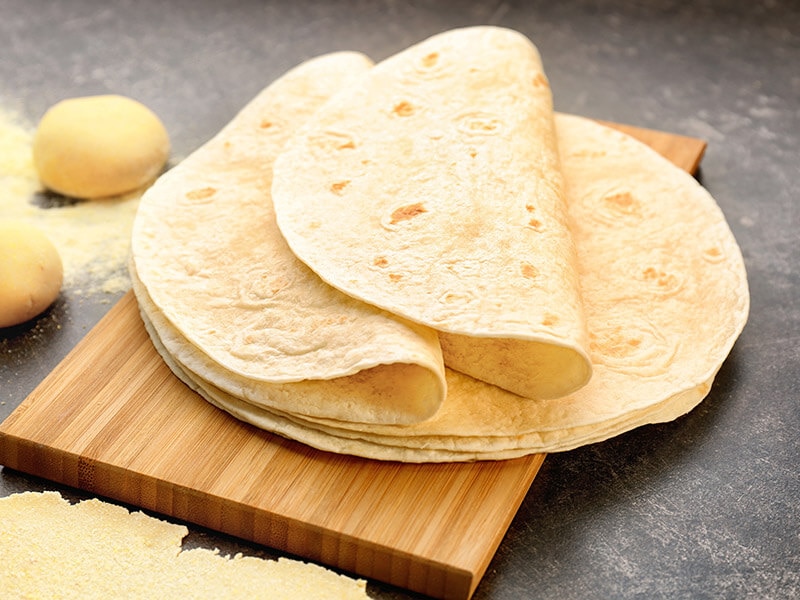
Tortillas are a familiar dish for most people in Mexico. The thin flatbread plays an essential role in many Mexican culinary recipes. Maize hominy meal or wheat flour are vital ingredients to make this premium food.
This fantastic food is the invention of the indigenous people of Mesoamerica. The evidence shows that this traditional bread existed in 500 BCE. There are 3 main versions of Tortilla: Corn Tortilla, Wheat Tortilla, and Nopaltilla (Cactus-Corn Tortilla).
2. Elotes
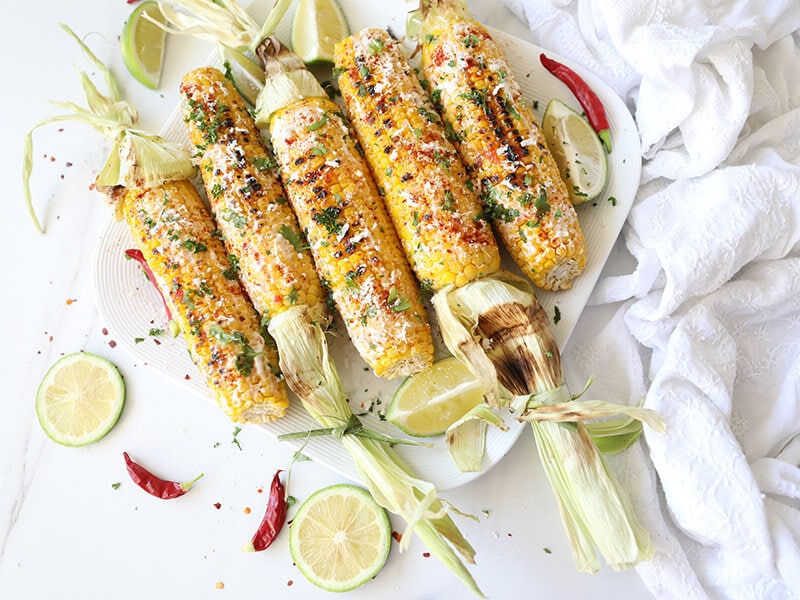
Street food is a typical cultural feature in Mexico, and Elote is a dish that symbolizes this culinary style. You can see delicious and attractive yellow corn across the streets in this beautiful country.
Typically, Mexicans will boil or grill the corn. Corn kernels’ delicate flavor works well with the creamy and cheese flavor of sour cream. In addition, you can go crazy with the excellent taste of butter, cheese, mayonnaise, or salt when enjoying this dish.
Do not forget to try Elotes when you go to Mexico.
3. Enchiladas
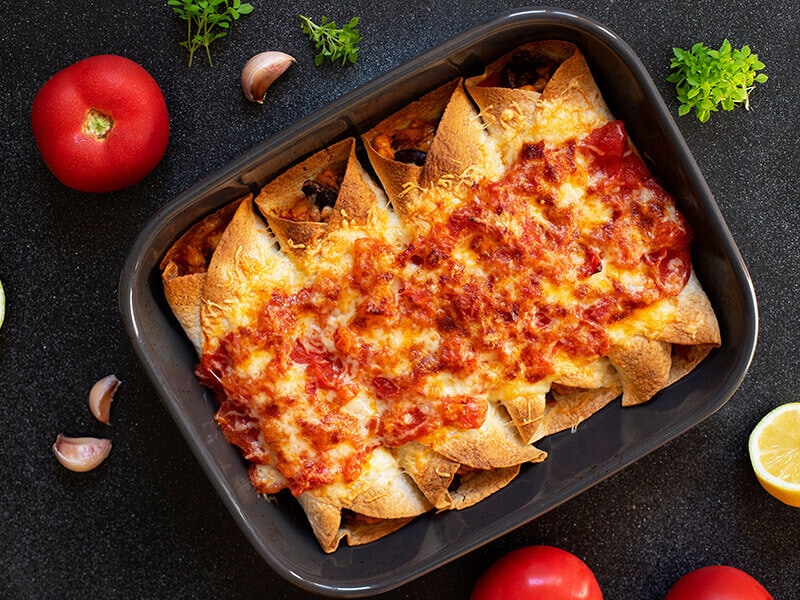
It has appeared in the Valley of Mexico since the Mayan times. It was born when people enjoyed corn Tortillas wrapped around small fish. Today, you can find this dish with flour or corn Tortillas. They are filled with seafood, beans, meat, or cheese.
Mexicans consider it an excellent breakfast. They will have a new day full of energy when enjoying this yummy food with chili sauce. It is possible to try the turkey Enchiladas version or vegetable Enchiladas when coming to Mexico.
FAQs
Aside from the familiar information in the above sections, you need to check these frequently asked questions and answers related to this topic to understand more about 2 famous cuisines.
Japanese Or Mexican Food: Which Is Your Favorite?
Are you satisfied with the knowledge I have provided in this post? I am looking forward to seeing other ideas or feedback from your comments. Therefore, feel free to share your thoughts after following this post.
It’s fantastic to learn about the food of the 2 well-known cuisines. From now on, you can answer any question about Mexican and Japanese food. Do not forget to introduce this post to your friends. Thanks a lot!
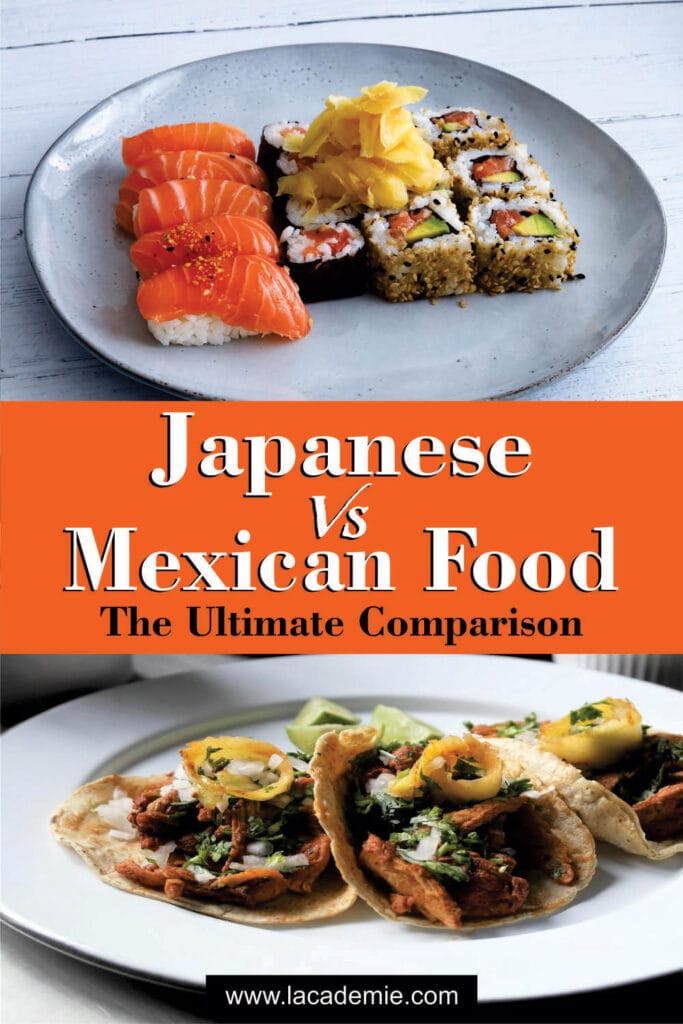
References
- Mexican cuisine. (n.d.). Wikipedia. Retrieved June 18, 2022.
- McDonald, E. (2018, September 23). A hot topic: Are spicy foods healthy or dangerous? UChicago Medicine. Retrieved June 18, 2022.


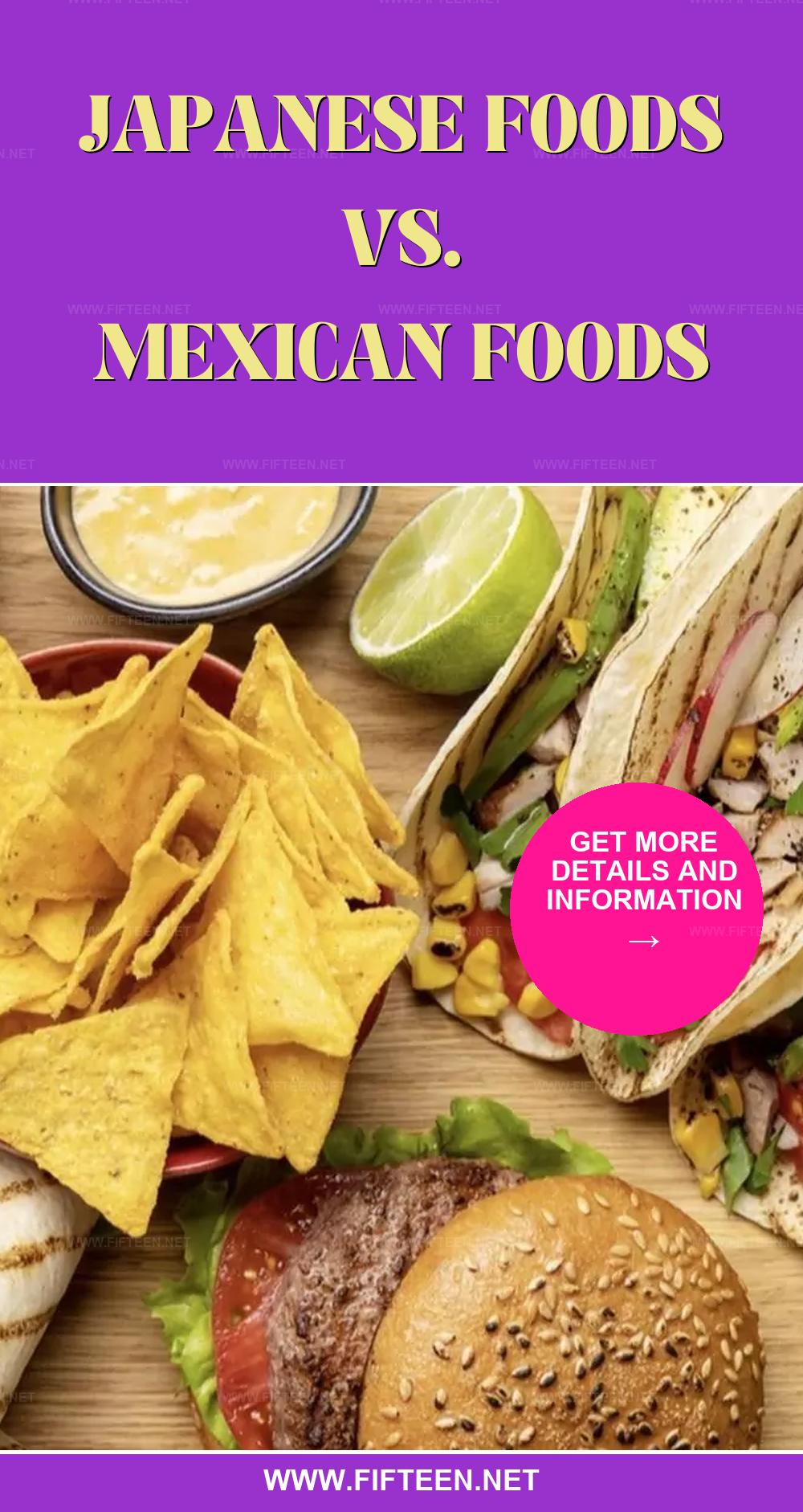
Jamie Scott
Editor in Chief, Senior Content Writer
Expertise
Home Cooking, Meal Planning, Recipe Development, Baking and Pastry, Food Editor, Cooking-video Maker, Western Food Evaluation Expert
Education
Le Cordon Bleu College of Culinary Arts
Local Community College, New York, NY
Jamie Scott is a skilled culinary expert and content creator specializing in Western cuisine. With over 15 years in the culinary field and formal training from Le Cordon Bleu, Paris, Jamie deeply understands how to blend nutrition with delicious flavors. His passion for cooking matches his commitment to making healthy eating accessible and enjoyable.
On Fifteen.net, Jamie brings a fresh perspective to classic dishes and beverages, offering readers insightful recipes, cooking tips, and a fresh view on meal planning that emphasizes taste, health, and simplicity.